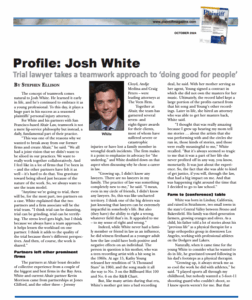an Altair Law Blog post by Jeremy Cloyd

A colleague recently asked if I could help a client whose hand was amputated by his brand-new Polaris RZR offroad vehicle. When the vehicle rolled, his hand was ejected and crushed between the roll cage and the ground. At the time, my partner Craig Peters and I were already working on two similar cases: one involving a woman whose hand had to be amputated; and another involving a man whose arm was nearly severed – both injured during rollovers of Polaris RZR vehicles. I was surprised to learn both how common this type of injury has been since Polaris began selling the RZR vehicle in 2008, and the lack of efforts to mitigate this risk. (To learn more about this case, click here.)
WHAT IS AN RZR VEHICLE?
Polaris RZR (pronounced ‘razor”) vehicles resemble and operate like high-speed, off-road golf carts. Sounds fun, right? The flipside is they often rollover during nearly any operating conditions. Because these vehicles often rollover, Occupant Retention Systems are mandatory to keep passengers’ – and their body parts – inside the vehicle when it rolls or tips. The RZR’s Occupant Retention System includes a half door or half window net that leaves an open window, a grip for occupants to hold onto, and a warning to keep hands and arms inside the vehicle. This open-window design relies upon the theory that occupants can volitionally prevent their limbs from being ejected from the vehicle during a sudden, unexpected, and uncontrolled vehicle roll. However, what often happens during a rollover is rider’s hands and arms are ejected from the RZR and crushed between the ground and the rolling vehicle.
WHAT MAKES THE POLARIS RZR VEHICLE A DEFECTIVE PRODUCT?
Many people think of a “defective product” as one that is broken or does not perform as intended. But the definition of a “defective product” for purposes of products liability is much broader and includes products that perform as intended but nevertheless pose an unreasonable danger to consumers because of the way they are designed. Under California law, a manufacturer is strictly liable for harms caused by the “defective design” of a product if the conditions of either one of two tests are satisfied: the risk benefit-test; or the consumer expectations test.
The risk-benefit test for a strict liability design defect requires the plaintiff to show the design caused the injury. If the plaintiff makes this initial showing, the defendant must then “establish, in light of the relevant factors, that, on balance, the benefits of the challenged design outweigh the risk of danger inherent in such design.” Kim v. Toyota Motor Corp. (2018) 6 Cal. 5th 21, 30. In balancing the risks and benefits of a design, a jury will consider such factor as: the gravity of the potential harm; the likelihood the harm would occur; the feasibility of an alternative design; the cost of an alternative design; and the disadvantages of an alternative design.
The other test for design defect – the consumer expectations test – is simpler and holds a product manufacturer liable “if the product has failed to perform as safely as an ordinary consumer would expect when used in an intended or reasonably foreseeable manner…” Barker v. Lull Engineering Co. (1978) 20 Cal.3d 413, 418. Under this test, a jury must decide whether a product meets the minimum safety expectations of its ordinary users. Product warnings, instructions, and marketing materials may inform the jury as to whether a reasonable consumer would expect to lose their hand or arm as a result of using a RZR vehicle.
HOW CAN POLARIS RZR VEHICLE ROLLOVER LIMB INJURIES BE PREVENTED?
One simply way to prevent people from losing hands and arms is to include a window net. Polaris’ competitor, Honda, has made full window nets standard on its side-by-side offroad vehicles for over a decade in an effort to protect off-road enthusiasts from the inherent danger of crushed upper extremities.
Many people injured by the Polaris RZR have demanded the same feature be adopted on the RZR. One of the earliest users of Polaris’ RZR, a 15-year-old girl, had her right arm amputated when it was ejected from and crushed by the vehicle during a rollover. In her 2011 lawsuit, she alleged that the RZR should have had better occupant protection features including safety nets.
WHAT IS POLARIS DOING TO KEEP PEOPLE SAFE?
Instead of creating a safer product, Polaris fights vigorously to conceal evidence of other injuries involving its product. The Alameda County Superior Court recently granted my client an Order requiring Polaris to produce all evidence of other upper extremity injuries during RZR rollovers. The evidence produced was shocking: at least forty-two other similar injuries including at least twenty-two amputations are listed in the publicly available records alone. Many of these Polaris customers have similarly demanded that Polaris adopt better safety features on its RZR vehicles.
Unfortunately, these demands have fallen on deaf ears. I recently had the opportunity to question one of Polaris’ design engineers under oath about the use of window nets. He testified that Polaris has “not evaluated a full net” and there was “no need for that or reason to do that.” The at least twenty-three people with missing body parts would disagree. This is nothing less than a public safety issue. Altair Law will continue to fight to bring awareness and change to this issue.
Jeremy Cloyd is a partner at Altair Law, located in San Francisco, California. In addition to working on Polaris RZR product defect injury cases, Jeremy also represents victims of construction site negligence, medical malpractice, police misconduct, government claims, dangerous property, on-the-job injuries, brain injuries, spinal cord injuries, gas explosions, auto accidents, dog bites, dangerous property, wrongful death, and amputations.


